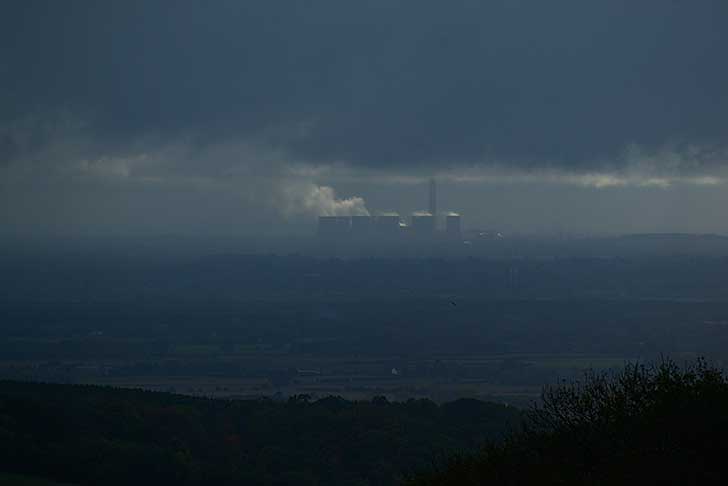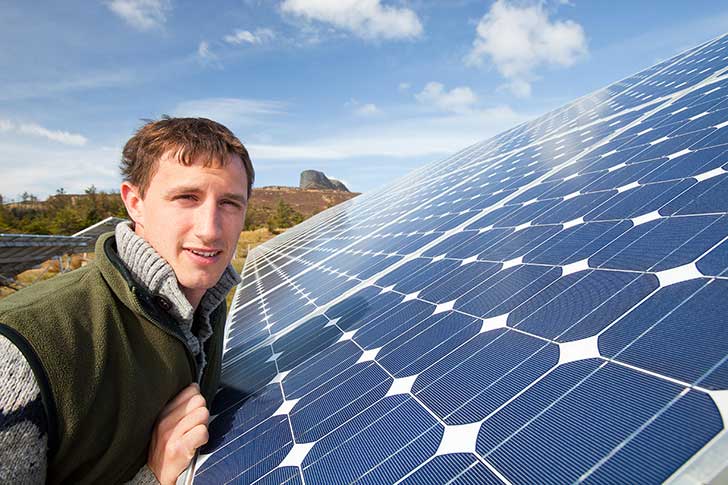Coal, climate and the countryside: why CPRE wants to keep coal in the hole
Ready to learn everything you need to know about coal – and why it’s bad news for our landscapes, health and planet? Read on for your one-stop shop explainer about coal, the countryside and the climate.
The climate emergency is the biggest threat to the countryside
Most of us need only look outside our windows or turn on the news to see the impacts of an overheating world. From missing birds, failing crops and seasons on the move, the signs are everywhere.

Major floods have ravaged parts of the country in recent years, while 2020 was the hottest year we’ve ever experienced, with every one of the seven years before it being a record-breaker too.
And this is just in the UK. In October 2018, a global scientific report brought to our attention the impact that the climate emergency is having around the world, from wildfires in California to sinking homelands in the Pacific. We were warned that we had little over a decade to stop this all from getting much, much worse.
But still, barely any progress has been made.
By now, the causes of the climate crisis are pretty well known. They include industrial farming, unsustainable transport, overconsumption… the list goes on. The key is carbon dioxide being released in amounts that our air and atmosphere can’t handle.
All of the carbon-emitting activities are part of a wider system: an unequal, global economy powered by fossil fuels, and one that must change if we’re to get out of this mess.
This fossil-fueled economy goes back a long way, but nothing spells it out better – or charts our best path out of it – than a history of its main protagonist: coal.

An unhealthy addiction
Back in 1882, the UK’s first coal-fired generator opened at Holborn Viaduct in London.
From this point to as recently as 2017, not a day went by in the country when coal wasn’t being produced.
With coal production peaking at 292 million tonnes in 1913, it became integral to the UK (and global) economy in the 20th century, but it was only in the latter half that the impacts of all this burning rose to attention.
When the streets of London began to fill with thick smog in the winter of 1952 (fans of the TV show The Crown might remember this in series 1), people started being admitted to hospital at an alarming rate. The culprit? Cold weather, windless conditions and, you guessed it – coal.
A particularly poor variety of coal, high in sulphur and emitted from the numerous power stations across the capital combined with the fog and consigned thousands to hospital beds with respiratory problems, leading to many premature deaths.
Keep the coal in the hole
Since then, and although the industry has more regulation today, the local impacts of burning coal have become well-established.
They range from heart attacks to lung disease, with the now-closed Aberthaw coal plant in Wales said to have caused over 3,000 premature deaths during the 45 years it was in operation. Per unit of energy, coal kills more people from local air pollution than any other energy source.

Coal is the world’s biggest single source of carbon dioxide emissions, making up about a third of the total. This is huge. It’s little surprise that governments around the world are picking up on this and seeking to reduce their production.
But this isn’t happening nearly fast enough. In the next ten years, we need to reduce our coal production by 11% each year to reach a safe limit of global average temperature rise, yet current world governments’ plans put production at a 2% per year increase.
What we can do about it
As one of the first countries to burn coal at an industrial pace and so one of the biggest historical contributors to the climate crisis, the UK has a moral responsibility to reduce its emissions as early as possible. This can leave a fair share of emissions for those countries and communities that have contributed less.
The good news? We have all the solutions at our fingertips. As we build back our economies from the coronavirus pandemic, a green and fair recovery with clean energy and secure, sustainable jobs at its heart isn’t just the morally right thing to do – it’s common sense.
The countryside can also be at the heart of this transition – it has all the tools available for tackling the climate emergency.
Renewables are replacing polluting sources of energy at an exciting pace – in 2020, the UK used more renewable-produced electricity than fossil fuel-produced over the course of the year for the first time ever.

And even harder-to-decarbonise sectors like steel are showing promising signs. Many fossil-free steel production plants are currently being piloted, such as the Hybrit project in Sweden (using hydrogen generated by renewables, in place of metallurgical coal), and the Arcelor Mittal in Germany, testing hydrogen steelmaking on an industrial scale with an annual production of 100,000 tonnes.
It’s time for change
These changes are essential if we are to have any chance of tackling the climate emergency, and local campaigners have been leading the resistance against new fossil fuels for generations. Even the government appears to have acknowledged that we cannot justify any more frontiers of pollution, least of all coal.

With a 2025 phase-out date for all coal plants, and as founding members of the ‘Powering Past Coal Alliance’, the UK was arguably leading the fight against domestic coal production in 2017.
At CPRE, we celebrate this – but we won’t rest until our energy is clean and even bolder steps towards fighting the climate crisis are underway.
This includes seeing off fresh threats to the climate in the form of new coal mines – as we saw proposed in Cumbria. We wouldn’t stand by and see the first deep coal mine in 30 years planned when the government itself committed to a ‘green industrial revolution‘ to help the economy recover from the coronavirus pandemic.
Emphatic campaigning from CPRE and many other groups, including essential local voices, saw the government indicate a change of heart – proving once again that people power really does have an impact.
Help us to keep coal in the hole
Want to be a part of it? Sign up for our monthly emails, which summarise our campaigning work and keep you posted on new breakthroughs, or join as a member from just £3 a month to help us keep pushing for better energy and to keep the coal in the hole.






